Marie Cloquet
TRAVELING LIGHT
08/09/2019 - 20/10/2019
Marc Rossignol
Synchrone
Opening Sunday 9 September 2018
Marc Rossignol
Synchrone
Opening Sunday 9 September 2018
Marc Rossignol
Synchrone
Opening Sunday 9 September 2018
Marc Rossignol
Synchrone
Opening Sunday 9 September 2018
Herman Van Ingelgem
Foreign Bodies & Protheses
06/09/2021 - 17/10/2021
Jackie P.
Lots of stories could be told about Jacqueline Peeters. One of them could be about how many years ago, in the Netherlands, she embarked on a first career as an artist and was awarded the Royal Prize for Painting. She then moved to Brussels, but around 2000 she chose to focus on a career as a media analyst and on her family. Some fifteen years later, from her square farmstead near Geraardsbergen, the paintbrushes enticed her once again and through social media she now reaches a new audience.
Though her new work doesn’t take a radical leave from her earlier paintings, she chose to overpaint a significant number of her old canvases. Not from a desire to delete something, but rather as a second wind. The romanticism of the past is entirely lost on Peeters—she seeks the here and now. Because of this method, black and white are prominent colours in her palette. The hidden layers of paint add a tangible – and sometimes nearly visible – dimension. Occasionally there is a literal glimpse of what is underneath: on the paintings with windows, or where she uses texts, titles or strips of canvas from earlier works.
Another narrative could be about how, as the child of a poet and a painter, Peeters always knew she wanted to draw and paint. Text plays an important role in her work as well. It is no coincidence that she sometimes uses pairs of words, joined by ‘and’ or ‘or’, like search terms can be connected by media analysts in online search queries. Sometimes words and names—in sentences, partial phrases, lists or family trees—are painted directly on the canvas; sometimes they are written on a scrap of paper that is sewn onto the painting.
There could also exist a narrative about how Jacqueline Peeters often plays with her own name—a name that sounds familiar, but that does not stand out. ‘With this name, you can’t become famous,’ one would be inclined to think. When she lived in Brussels in the rue de Parme, she reflected that she should have been born Madame de Parme, now living in the rue Peeters. Occasionally, she uses a stamp with the text ‘The Estate of Madame de Parme’ (for of course, deceased artists appeal more to the imagination than living ones).
In a work from 2021, she creates a fictional exhibition, which on the canvas materializes as a sort of round dance of names, with other artists called Jacqueline. In other works, she plays with the wives or muses of famous men with the same name (think of Picasso’s wife or Jacqueline Kennedy, who became known in her second marriage as Jackie O.). She thus creates a fictitious network for herself, from fellow artists to presidents’ wives and even French chansonniers: on a large, red canvas, she features on an imaginary stage next to Jacques Dutronc. Together they are singing his song Le plus difficile.
Finally, there could also be a story about Jacqueline Peeters, the artist who in her paintings playfully criticizes the mechanisms of the art world. From her herringbone floors to her price lists and Unsold Paintings, the artist seems to mock the commercial aspects of art, especially the way artistic credibility seems to depend on it. Though there is definitely an element of criticism, rebellion is not what she aspires. For her, it is about a sense of playfulness, a wink, a nuance, a question that need not be answered, yet must be raised.
All these stories are true, but not in a univocal or absolute manner. They all constitute a possible reading of Jacqueline Peeters’ work. The artist plays with all these narratives, explores them, only to disregard them at the right time. Surreptitiously and gracefully, with a delightful sense of relativism, she picks apart all roles that could be imposed on her. In all anonymity—all the anonymity her name can possibly convey—she perpetuates a unique status for herself with an oeuvre that breathes both natural flair and artistic urgency. The glamourous and globally beloved Jackie O. may have perfectly coincided (that is, for the public) with the role ascribed to her, yet her fellow-Jacqueline transcends this in every possible way. On to the next icon: Jackie P.
Tamara Beheydt, January 2023 Translated by Dirk Verbiest
 |  |  |
|---|---|---|
 |  |  |
 |  |  |
 |  |  |
 |  |  |
 |  |  |
 |  |  |
 |  |  |
 |  |  |
 |  |  |
 |  |  |
 |  |  |
 |
In the early 1990s, Jacqueline Peeters started making invitation cards and posters for fictitious exhibitions of unsold paintings in non-existent galleries – a cry for attention and an attempt to get her career off the ground. This marketing offensive became the subject of her work. Under the name of Madame de Parme, Peeters made bold paintings with the text Unsold Painting no. 41, no. 42, et cetera, and painted price lists of her unsold works.
In her recent paintings, Peeters imagines the herringbone parquet floors of her dream galleries. Some have English words on them, such as browned, foxed, torn, or burnt, qualifications which are used in old master auction catalogues. They refer to the hundreds of paintings and drawings that Peeters has been storing in an old shed near her house for years and to the poor state in which they would undoubtedly have been found if her oeuvre had not emerged from oblivion.
Some of her unsold paintings have been painted over to create small windows offering glimpses of the underlying painting. Her playing with the past and the present is also visible in the paintings about her Dutch-Indo family tree which are both a playful nod at the identity debate and a tribute to her ancestors. Names play an important role in Peeters’s paintings. For example, she makes a connection between her family tree and the titles of works by Édouard Manet (La Brune) and Henri Matisse (La Mulâtresse). In other paintings she combines her first name with the names of men who loved a woman named Jacqueline (John F. Kennedy, Pablo Picasso). The result is both a light-hearted and dramatic poem-painting with Boolean operators.
Jacqueline Peeters (b. 1961, Eindhoven) lives and works in Geraardsbergen, Belgium. She studied at the 'Academie voor Beeldende Vorming Tilburg' and was a resident at 'Ateliers 63' in Haarlem from 1984 to 1986. In 1987 she won the 'Royal Award for Modern Painting'. She had solo exhibitions at Motta Art Books in Eindhoven (1991), Kabinett in Bern (1998), Galerie van het Rhok in Brussels (Ballad of Supply and Demand,1999), Zazà Ramen in Milan (Unsold Paintings, 2020) and Gerhard Hofland Gallery in Amsterdam (Eat the heart gently, 2022).
Publication: Jacqueline Peeters, Eat the heart gently, 60 pages, ca. 40 illustrations, published by Motta Art Books, Amsterdam, with an introduction by Dominic van den Boogerd, art critic and former director of De Ateliers, Amsterdam. Design: OnckWest, isbn 978-90-807520-0-9 Dutch/English, 2022.
In de vroege jaren negentig begon Jacqueline Peeters met het maken van uitnodigingen en affiches voor fictieve tentoonstellingen van onverkochte schilderijen in niet-bestaande galeries - een schreeuw om aandacht en een poging om haar carrière als kunstenaar van de grond te krijgen. Dit marketingoffensief werd het onderwerp van haar werk. Onder de naam Madame de Parme maakte zij brutale schilderijen met de tekst Unsold Painting no. 41, no. 42, et cetera, en schilderde zij prijslijsten van haar onverkochte werken.
In haar recente schilderijen stelt Peeters zich de visgraatparketvloeren voor van haar gedroomde galeries. Op sommige van deze schilderijen staan Engelse woorden te lezen als browned, foxed (met bruine of gele vlekken), torn (gescheurd), of burnt (verbrand), kwalificaties die gebruikt worden in veilingcatalogi van oude meesters. Ze verwijzen naar de honderden schilderijen en tekeningen die Peeters al jaren in een oude schuur bij haar huis bewaart en naar de erbarmelijke staat waarin ze ongetwijfeld ooit aangetroffen zouden worden als haar oeuvre niet aan de vergetelheid onttrokken zou zijn.
Over sommige van haar oude, onverkochte schilderijen schildert Peeters vensters, als doorkijkjes naar het verleden. Haar spel met heden en verleden komt ook tot uiting in de schilderijen over haar Indische familiestamboom. Die zijn zowel een knipoog naar het huidige identiteitsdenken als een eerbetoon aan haar voorouders.
Namen spelen een belangrijke rol in de schilderijen van Peeters. Zo legt zij in haar werk verbanden tussen haar familiestamboom en titels van werken van Édouard Manet (La Brune) en Henri Matisse (La Mulâtresse). In andere schilderijen combineert zij haar voornaam met de namen van mannen die ooit een Jacqueline als geliefde hadden (John F. Kennedy, Pablo Picasso). Het resultaat is een zowel lichtvoetig als dramatisch schilderij-gedicht met Booleaanse operatoren.
Over de kunstenaar
(uit: tekst Dominique Van den Boogerd) - Jacqueline Peeters, Eat the heart gently, 2022, 60 pagina’s, ca. 40 illustraties, ontwerp: Onck West, uitgegeven door Motta Art Books, isbn 978-90-807520-0-9, Nederlands/Engels
 |  |  |
|---|---|---|
 |  | 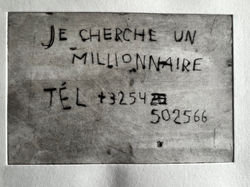 |
 |  |  |
 |  |
 |  |  |
|---|---|---|
 |  | 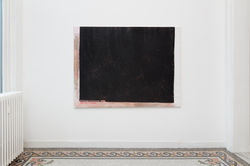 |
 |  | 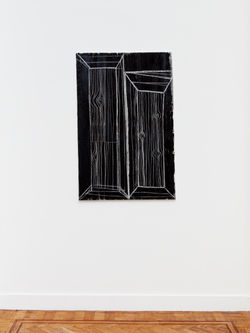 |
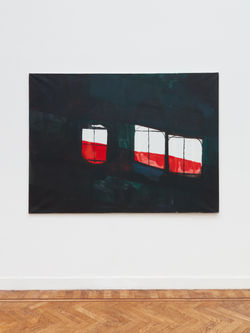 |  |  |
 |  |  |
 |  |  |
 |  |
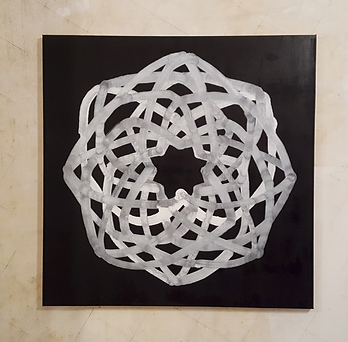.png)
.png)



